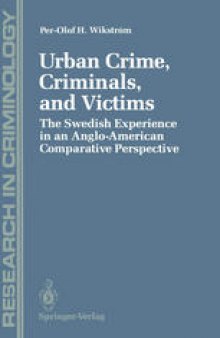 جزییات کتاب
جزییات کتاب
Crime is largely an urban phenomenon, but the specifically urban and area dimen sions of the social processes that are connected with crime have been seriously understated in much recent criminological work ... Such a claim could not have been made forty years ago. (Baldwin & Bottoms, 1976, p. 1). The above statement by Baldwin and Bottoms about the neglect in crimi nology of the urban dimension of crime was made in the mid-1970s. However, in the last decade there has been a significant upswing in theory and research on crime in the urban environment. Also, new areas oftheory and research into urban crime have come into focus. (For overviews see Brantingham & Brantingham, 1984; Davidson, 1981.) One very good example of the increasing interest in urban crime is the recent volume of Crime and Justice entitled "Communities and Crime" (Reiss & Tonry, 1986), in which Reiss makes a strong argument for the importance of the study of crime in urban communities and for the linking of the ecological and individual traditions in theory and research on crime. A review of the literature on crime in urban environments shows, not unexpectedly, that Anglo-American research heavily dominates the scene (Wikstrom, 1982; 1987b). Hence, much of the experience we have on urban crime is based on North American and British research and theory.



 دانلود کتاب
دانلود کتاب

 جزییات کتاب
جزییات کتاب





 این کتاب رو مطالعه کردید؟ نظر شما چیست؟
این کتاب رو مطالعه کردید؟ نظر شما چیست؟
